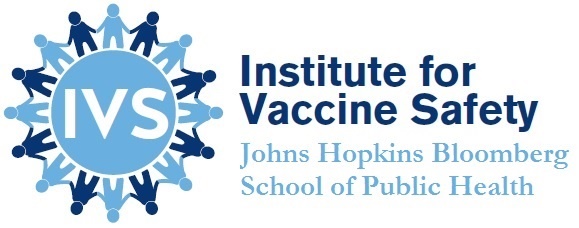Do Vaccines Cause Immune Thrombocytopenic Purpura?
Conclusion | Epidemiological Evidence | Proposed Biological Mechanism | Archives | References
Conclusion
Natural viral infections such as influenza, varicella, measles, mumps and rubella are associated with immune thrombocytopenic purpura (ITP). Thus, influenza, varicella, measles, mumps and rubella vaccines prevent ITP by protecting against natural infection. Measles-containing vaccines can very rarely cause ITP within 6 weeks of vaccination in children. However, these vaccines prevent many more cases of ITP than they cause. Influenza vaccines do not cause ITP. Other vaccines currently routinely recommended to the general population in the U.S.* have not been shown to cause ITP.
Epidemiological Evidence
Rates of ITP after MMR vaccination have been estimated at 1-3 cases per 100,000 doses [1-3]. However, this is significantly lower than rates of ITP after natural infection otherwise prevented by the vaccine; the incidence of ITP after natural rubella infection is an estimated 1 per 3,000, and incidence after natural measles infection is estimated to be even higher [2].
The 2012 report by the Institute of Medicine (IOM), now called the National Academy of Medicine (NAM), found no relevant studies of quality in the literature assessing an association between ITP and diphtheria, tetanus, pertussis and varicella vaccines, since the only applicable studies available used passive surveillance systems and therefore lacked an unvaccinated comparison group [4].
Studies published since this report have consistently shown an increased risk of thrombocytopenic purpura in children within 6 weeks of measles-containing vaccination [1, 2, 5, 6]. However, several studies published since this report have found no association between influenza vaccines and ITP [7-9], and early childhood vaccines other than MMR or MMRV (ProQuad) have not been shown to cause ITP [1, 2]. One study examining the safety of trivalent inactivated seasonal influenza vaccination in pregnant women reported a null association with thrombocytopenia [10]. A VSD study of 438,487 live births between 2007 and 2013 found slightly decreased rates of venous thromboembolic events and thrombocytopenia among pregnant women receiving Tdap vaccination [11]. A retrospective observational study of California infants found no cases of ITP during the 30-day risk interval after 46,486 doses of DTaP-IPV/Hib vaccine administered [12].
Proposed Biological Mechanism
ITP has been associated with natural viral infections such as influenza, varicella, measles, mumps and rubella [2, 13]. Patients with ITP have antibodies to platelets. Measles virus has an affinity for platelets and measles vaccine results in a transient decrease in platelet counts in the first few days following vaccination. ITP occurs later, within the first 6 weeks following vaccination. The most likely pathogenesis for ITP involves altered immune processing of the measles virus-platelet aggregations and induction of anti-platelet antibodies [14]. The IOM found only weak mechanistic evidence for an association between ITP and varicella vaccine, even when considering knowledge about the natural infection, as the only post-vaccination case documented provided little evidence beyond recurrence of symptoms after vaccine re-challenge [15]. The IOM also concluded that there was no mechanistic evidence for an association between ITP and diphtheria, tetanus or pertussis vaccines [4].
References
1. O'Leary ST, Glanz JM, McClure DL, et al. The risk of immune thrombocytopenic purpura after vaccination in children and adolescents. Pediatrics 2012;129:248-55.
2. Cecinati V, Principi N, Brescia L, Giordano P, Esposito S. Vaccine administration and the development of immune thrombocytopenic purpura in children. Human vaccines & immunotherapeutics 2013;9:1158-62.
3. Epidemiology and Prevention of Vaccine-Preventable Diseases. Washington D.C.: Centers for Disease Control and Prevention; 2015.
4. Institute of Medicine. In: Stratton K, Ford A, Rusch E, Clayton EW, eds. Adverse Effects of Vaccines: Evidence and Causality. Washington (DC): National Academies Press (US); 2012.
5. Andrews N, Stowe J, Miller E, et al. A collaborative approach to investigating the risk of thrombocytopenic purpura after measles-mumps-rubella vaccination in England and Denmark. Vaccine 2012;30:3042-6.
6. Bertuola F, Morando C, Menniti-Ippolito F, et al. Association between drug and vaccine use and acute immune thrombocytopenia in childhood: a case-control study in Italy. Drug safety : an international journal of medical toxicology and drug experience 2010;33:65-72.
7. Grimaldi-Bensouda L, Michel M, Aubrun E, et al. A case-control study to assess the risk of immune thrombocytopenia associated with vaccines. Blood 2012;120:4938-44.
8. Huang WT, Yang HW, Liao TL, et al. Safety of Pandemic (H1N1) 2009 Monovalent Vaccines in Taiwan: A Self-Controlled Case Series Study. PloS one 2013;8.
9. Villa M, Black S, Groth N, et al. Safety of MF59-adjuvanted influenza vaccination in the elderly: results of a comparative study of MF59-adjuvanted vaccine versus nonadjuvanted influenza vaccine in northern Italy. Am J Epidemiol 2013;178:1139-45.
10. Nordin JD, Kharbanda EO, Benitez GV, et al. Maternal safety of trivalent inactivated influenza vaccine in pregnant women. Obstet Gynecol 2013;121:519-25.
11. Kharbanda EO, et al. Maternal Tdap vaccination: Coverage and acute safety outcomes in the vaccine safety datalink, 2007-2013. Vaccine 2016;34(7):968-73.
12. Hansen J, et al. Safety of DTaP-IPV/Hib vaccine administered routinely to infants and toddlers. Vaccine 2016;34(35):4172-9.
13. Yenicesu I, Yetgin S, Ozyurek E, Aslan D. Virus-associated immune thrombocytopenic purpura in childhood. Pediatric hematology and oncology 2002;19:433-7.
14. Oski FA, Naiman JL. Effect of live measles vaccine on the platelet count. The New England journal of medicine 1966;275:352-6.
15. Wise RP, Salive ME, Braun MM, et al. Postlicensure safety surveillance for varicella vaccine. Jama 2000;284:1271-9.


